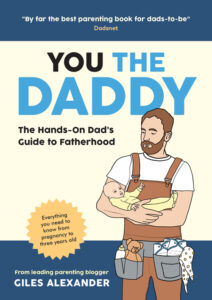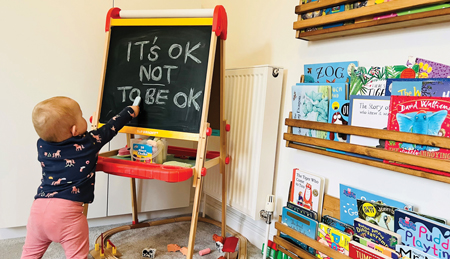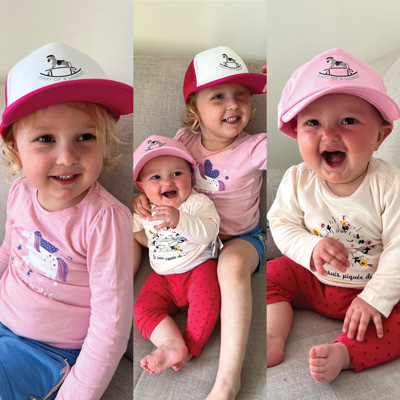
by Giles Alexander
Fatherhood Expert
Throughout history, for literally thousands of years, the principal role of a father has been to provide. But times have well and truly changed. Dads today are more actively involved in every element of raising our children and supporting our partners through pregnancy, birth and parenthood than any generation that’s come before.
Long gone are the days when expectant fathers would spend the whole birth sitting in the waiting room smoking cigars. No longer do we stroll through the front door at the end of the working day expecting the kids in bed and dinner on the table. Providing for your family in this day and age means so much more than merely bringing home the bacon.
As any working dad will tell you, being a father has never been more of a full-time job, and one that extends well beyond the traditional 9-5. Our job doesn’t stop once the monthly rent/mortgage/gas bills have been paid. Our working day doesn’t end when our paid employment finishes and we head home. Bath time, nappy changing, weaning, potty training, cooking, cleaning and emotional support are all fundamental parts of the job description.
More than ever, men today appreciate that being a dad is one of the most important jobs there is. An opportunity to build a family and shape a whole new life. To pass on our values and everything we’ve learnt to another human being, to change misconceptions and outdated stereotypes. And, ultimately, we all hope, leave a positive mark on the world. Because, beyond gestation and lactation, there really are no limits to what modern dads can do.
But this is only part of the story. To be really good parents, we need to be supportive partners too.
Because modern parenting is hard work. It used to be said that it takes a village to raise a child. And back in the day, that’s exactly how it was. New parents had so much more child rearing support from family, neighbours and the wider community than we do now. It was also much more feasible to live off one salary and still afford regular childcare, buy a house, pay the bills and buy groceries.
But the reality is that incomes today don’t cover what they used to, while societal expectations on new parents (especially new mums) are greater than they’ve ever been. Not only is the parenting role itself bigger, but more of the invisible, unpaid tasks associated with raising a family and modern life fall on new parents to complete themselves, with the so-called ‘village’ nowhere to be seen.
Given that gender inequality at work is still commonplace, this still too often leads to the bulk of the parenting and domestic load being heavily biased against women, who end up taking on the lion’s share. As modern fathers, we shouldn’t just accept this as the status quo.
It’s unreasonable to expect the weight of parental responsibility to land solely on a mother’s shoulders. Add to this all the other daily tasks we all need to complete just to get through the day – the laundry, shopping, cleaning, cooking and general life admin – and it’s even more unrealistic to expect one person to do it all alone. There simply aren’t enough hours in the day.
Of course, we all come into fatherhood with different life experiences, jobs, financial situations and support networks, which each have a massive impact on how well we can fulfil our new parenting role. And there is no such thing as the perfect dad, with each of us doing it the best we can, in our own unique way.
But no matter our personal situation, every one of us can choose to be a hands-on dad. A man who knows his stuff, rolls up his sleeves, does his fair share at home, and never shies away from his fatherly duties. Who appreciates his partner and the sacrifices they make. Who chooses to see parenting as a 50:50 partnership between two equals. And sets a positive example, both for his kids and for every new dad that comes after him, by showing them what’s possible.
It isn’t easy. Anything worth doing rarely is. The hours are long, the pay is terrible, and you spend most of your time working with someone who doesn’t speak your language, needs feeding 8-15 times a day, and relies on you to wipe their bum! But, like all jobs, the more you put into it, the more you get out of it. And the rewards – well, they really are huge and will last a lifetime.
Giles Alexander is a hands-on dad of three and author of new parenting book You the Daddy: The Hands-On Dad’s Guide to Fatherhood. Find out more at





 Mining for diamonds
Mining for diamonds



 isten when their siblings say no to them entering their room. Emphasising that we also want to respect other people’s boundaries and giving them the language around boundaries is also really helpful. A boundary might not always sound like the word “no”, it can be “That doesn’t work for me”, or “I don’t like the sound of that,” and when you understand that this is someone conveying their boundaries, not only do they have phrases to listen out for but they have the same phrases they can use themselves.
isten when their siblings say no to them entering their room. Emphasising that we also want to respect other people’s boundaries and giving them the language around boundaries is also really helpful. A boundary might not always sound like the word “no”, it can be “That doesn’t work for me”, or “I don’t like the sound of that,” and when you understand that this is someone conveying their boundaries, not only do they have phrases to listen out for but they have the same phrases they can use themselves.
 For those of us ‘warenting’ our way through life, impossibly striving to be perfect parents AND perfect professionals, remember that success belongs to YOU. It’s yours to define. Own it.
For those of us ‘warenting’ our way through life, impossibly striving to be perfect parents AND perfect professionals, remember that success belongs to YOU. It’s yours to define. Own it.









